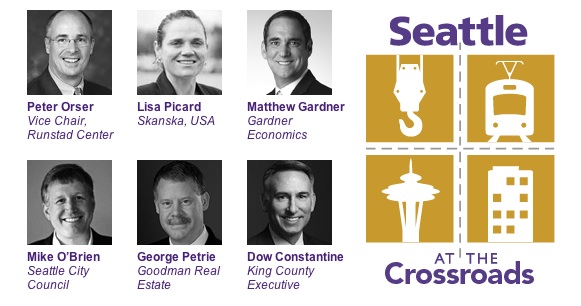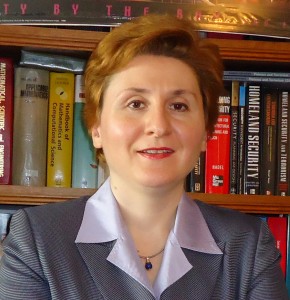
Dr. Sofia Dermisi, Runstad Endowed Professor in Real Estate is the recipient of the “Best Research Manuscript” award in the Hotel/Lodging Real Estate category for a paper presented at the American Real Estate Society annual conference in April, 2014. Dr. Dermisi’s paper, “Effects of Worldwide Terrorist Attacks Targeting Hotels on Overall Hotels’ Performance” examined the worldwide terrorist activity targeting hotels leading to transnational casualties. Three aspects of terrorist activities were assessed, utilizing data on incidents from the first quarter of 1996 through 2014: a) assessing their cyclicality, b) identifying factors affecting their frequency and c) exploring their financial fallout [Average-Daily-Rate (ADR) and Revenue-Per-Available-Room (RevPAR)] among luxury, mid-price and economy hotels. The results affirmed the cyclical behavior of the terrorist activity and casualties (8 and 3 years, respectively). A pivotal point in the frequency increase on hotel attacks was September 11,2001 which led to an increase by 75% through the first quarter of 2014. Worldwide and USA luxury hotels suffered financially more after a hotel terrorist incident compared to any other hotel type. Other socioeconomic variables (e.g. GDP/capita, oil prices, recessions etc.) applied had either a non-effect or a diverse effect on attack frequency and hotel revenue.
Category: Research
Please join us for the first annual Runstad Center Leadership Dinner!
The first annual Runstad Center Leadership Dinner will be held on October 9, 2014, at the Westin Hotel in downtown Seattle. Together with a distinguished panel of public and private leaders, we invite you to join the conversation on the future of our city, region and state.
Special Presentation: Announcing the Glenn Crellin Research Scholarship in honor of Glenn’s twenty-two years of outstanding public service to the state of Washington.
Please visit our event page for more information. Click here to buy a ticket or a table. (RSVP deadline is October 5.) If you are unable to attend but would like to make a contribution, please visit this page.
We look forward to seeing you on October 9!
Washington housing market improves in 2nd quarter of 2014
Washington State’s housing market showed improvement over its first quarter performance, according to a new report from the Washington Center for Real Estate Research here at the Runstad Center. However, year-over-year sales activity is still down across the state.
Runstad Center director Stephen O’Connor explains that while most economic statistics are reported at seasonally adjusted annual rates, these are not forecasts of future activity. He further discussed the Center’s findings with UW Today.
Here’s a preview of the data, in our Q2 2014 Snapshot. The full report, now available to subscribers, will be posted online when the third quarter report snapshot is released. If you’d like to become a subscriber, please contact wcrer@uw.edu.
Runstad real estate research roundup
The Runstad Center has been in the news lately, having released new statistics about record-setting median home prices in Seattle, as well as increased housing vacancy rates in the Tri-Cities. Glenn Crellin talked with KOMO News and the Tri-City Herald about the Center’s findings.
Additionally, Runstad Center Affiliate Fellow and faculty member AP Hurd has an article in CityLab about how outdated parking laws price families out of the city.
On a smaller community scale, M.Arch/MSRE ’13 alum Michael Kaiser is leading an effort to bring a “parklet” to life in the Uptown neighborhood of Seattle. A parklet transforms a small portion of the right of way into a pocket of public park space. They’re almost halfway to their fundraising goal… contributions large or small can be made by following the link here.
2013 Affiliate Fellow Lisa Picard on Urban Resiliency
“Today, the best lessons about urban resiliency appear to be found in Berlin and Detroit. These cities, both formerly wealthy manufacturing centers, have undergone economic ruin, population decimation and, now, phases of creative and economic re-emergence, fueled by grassroots community movements and entrepreneurial new arrivals.”
2013 Runstad Center Affiliate Fellow Lisa Picard is featured in this month’s issue of ARCADE, with a piece titled “Build Dynamic, Co-Created Plans and Stir the Soul:
Urban Resiliency in Detroit and Berlin.” The 2013 class traveled to these cities (along with Krakow, Poland) and explored the role of commerce as a catalyst to human connection in urban communities amidst economic, political, and natural destruction. Through travel, observation, interviews, and local discussions around commerce as an experience fostering positive social experience, the Fellows sought to build an understanding of the conscious and unconscious patterns that foster urban vibrancy; specifically thriving communities, even amidst adversity. Read Lisa’s full article here!
Mobility = Mobility (Part 2)
The previous entry from the Runstad Fellows looked at how an innovative city in Colombia – Medellin – has remade itself through a series of mobility-centered design interventions. The result of these interventions has created a well-connected city, provided better access to jobs, and decreased violence.
Seattle doesn’t have warring neighborhoods or broad swaths of informal settlements, but with the current transit funding gap, a recent proposal for gondolas, and debates about equity in Seattle, Medellin provides more parallels than one might initially think. So what could a Medellin-style mobility strategy look like for Seattle?

For one, it likely would not include reduced transit service. The residents of King County have spoken in the recent Proposition 1 vote, and they have chosen not to bridge the funding gap that King Country Metro has said is necessary to continue transit service at its current levels. This creates a scenario that has disproportionate effects on low-income and disabled citizens. For example, suggested night service cuts won’t affect a large number of people, but it will affect those who rely on public transit to work a night shift. Elimination of routes and reduction of frequency can be mitigated by some through the use of services like Car 2 Go and Lyft, but these aren’t affordable options for some in the city. Furthermore, as more people turn to cars in lieu of public transit, Seattle can expect more congestion on its roadways, which leaves less time for working and living life. Increasing transit routes and frequency allows people to have better access to jobs, spend less time in traffic, and spend less income on transportation. Medellin has made a concerted effort to improve transit access through a variety of options (light rail, BRT, gondolas, bus, etc.), and its residents have benefited from this investment.
Increased mobility would also change the dynamics of Seattle’s housing discussion. Currently, the discussion centers on providing affordable housing in close proximity to good jobs – Downtown and South Lake Union. This is a noble goal, but it requires spending precious affordable housing dollars where land and construction costs are most expensive. Because this money pool is finite, dollars spent on affordable housing Downtown do not go as far as they do in a place like Roosevelt or Beacon Hill. One of the fellows points out that this strategy is like feeding 2 friends with filet mignon as opposed to 8 friends with roasted chicken. A Medellin-style mobility strategy would open the possibilities to creating housing outside of these high-cost areas while still providing excellent access to jobs. The dynamics of housing (affordable and market-rate) change when a city has access to high quality transit and does not have to fight for well-located land. Would an investment in transit create net savings for a city when accounting for the cost of housing? That is a blog post of its own, but it is a question worth exploring. Any data nerds out there?
Finally, another mobility issue facing Seattle is working with what we have…or don’t have. In Medellin, effort was made to allow existing neighborhood centers to integrate with new transit centers. For example a new gondola station integrated with a new public library project, and both were located within a preexisting neighborhood commercial center. In Seattle, investments in infrastructure often miss the opportunity to overlap with existing neighborhood centers. Take the Columbia City Light Rail Station for example. The station is blocks from the true heart of Columbia City. This doesn’t make the station useless, but it does miss opportunities for synergy that were evident in Medellin. It also makes for a lot of incomplete neighborhoods. This means transit centers (i.e. Beacon Hill Station or Northgate Transit Center) often lack essentials like jobs, grocery stores, childcare, etc., while neighborhood centers, which have many of those things, often lack mobility. It takes all of these to have a truly complete neighborhood. Obviously, there are hurdles with developing new transit centers in existing neighborhood centers – namely, purchasing the Right of Way, but as Seattle looks at future reorganization and/or expansion of its transit network, it should view transit centers and neighborhood centers as one in the same.
Seattle and Medellin are not exactly identical twins, but there are still many similarities when it comes to transportation and mobility. When it comes to building a world class city that is livable and accessible for all, Medellin provides some great examples for Seattle to follow. If done right, Seattle could one day have the type of transit-rich, interconnected city the Fellows saw on our trip to Colombia.
Mobility = Mobility
Can increased physical mobility lead to increased social mobility in a city? In one resilient Colombian city, leaders believe physical mobility is a necessity.
Medellín, Colombia is a city on the rise. It was recently named City of the Year by Urban Land Institute and was the host of the United Nation’s prestigious World Urban Forum this past April. The resilience of this city is noteworthy considering it is just one decade removed from widespread violence and instability. The reign of terror brought by the drug lord Pablo Escobar is still a fresh memory for many residents. However, progressive and innovative urban planning techniques have gone a long way to help remake this city, and it is now receiving great acclaim for urban planning techniques that look to tackle social equity issues.
Medellín’s Mobility Issues
As Medellín emerged from its years of violence, its leaders acknowledged that mobility was a key issue for the city. First, there was a lack of connectivity between the city center and the city’s hillside communities. These hillside communities were largely unplanned, informal settlements that included a maze of pathways and streets that lacked connection to the rest of the city. This meant that people living in the hillside had poor access to good jobs and had to devote considerable time their commutes.
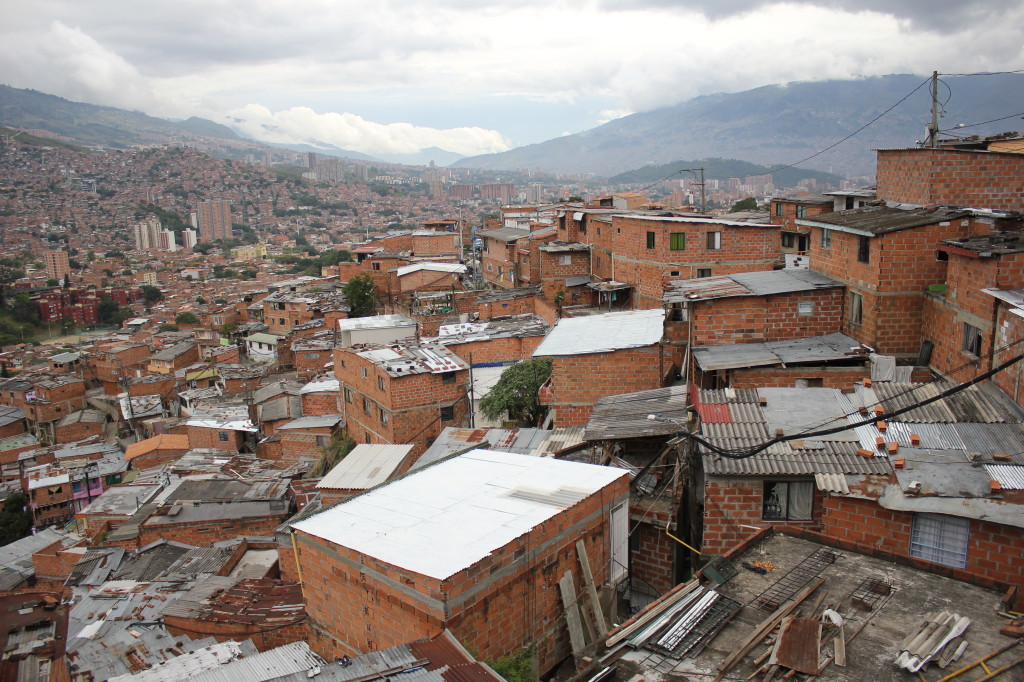
‘Within the communities, this lack of connectivity created an environment that allowed crime and violence to persist – even when it was decreasing across other parts of the city. Neighborhood gangs controlled access points into the neighborhoods, and a lack of connections and interaction between neighborhoods allowed tension to fester and cross-neighborhood wars to break out. While mobility’s impact on these problems may not be obvious, it’s clear that violence and a lack of access to jobs do not create the ideal conditions for someone looking to move up in the world.
Strategic Changes
To alleviate these problems, city officials worked with individual communities to develop a strategy to open and connect these communities. They did this through a series of precise, targeted projects, which became known as “urban acupuncture”.
To increase mobility within a community, the city created a network of pedestrian paths and plazas that were connected vertically by hillclimbs, stairs, and, most notably, outdoor escalators.

To open up a community to its neighbors, the city developed additional access points with turnarounds for emergency vehicles and taxis, tore down walls to extend dead-end streets to the next neighborhood, and, in some cases, constructed literal bridges between neighboring communities.
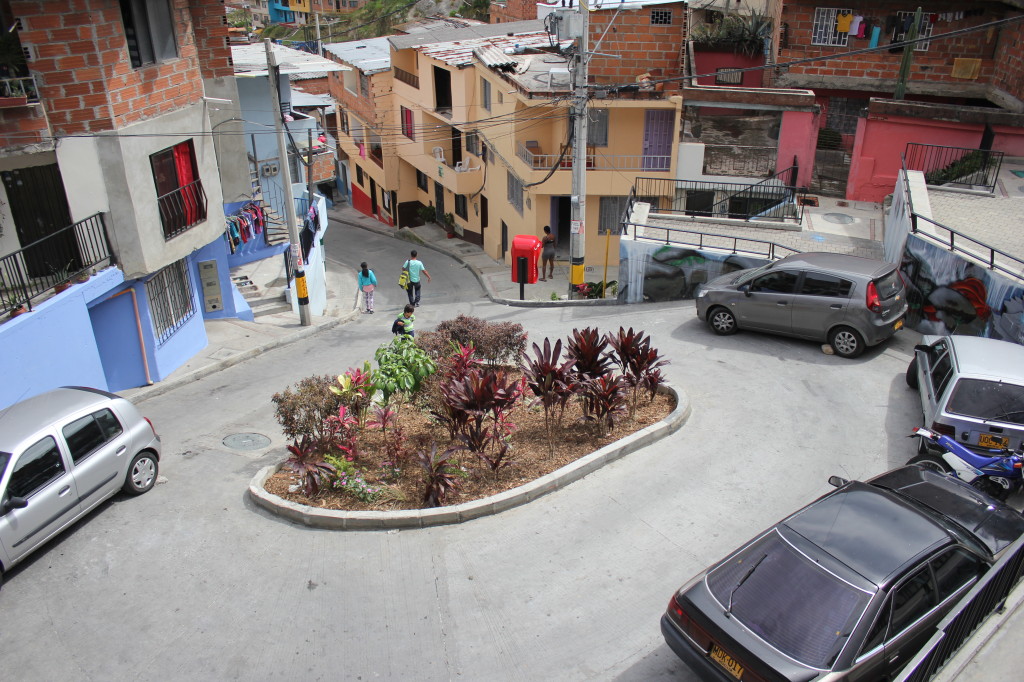
To increase access from the hillsides to the city center, the city established a network of gondola lines that linked neighborhood centers directly to the artery of the city’s transit network – the light rail line.
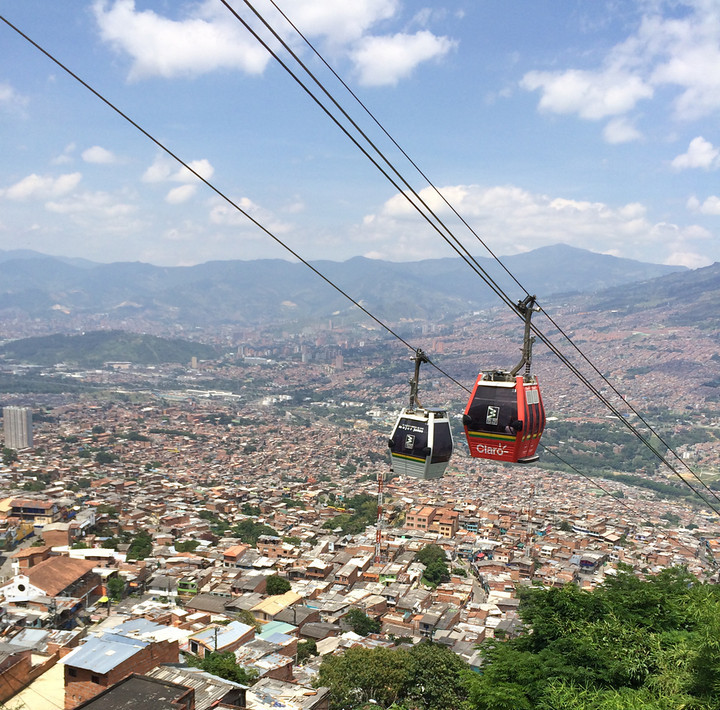
The result of these projects is a well-connected workforce, social exchange – “intercambio”, reduced rates of violence, and a sense of pride. What was once a two-hour trip for work in one of the city’s job centers is now around 45 minutes. Streets that were once ruled by gangs are now shortcuts for children going to school. Residents of warring neighborhoods now gather at the same weekend markets. Mobility has been the key to transforming these neighborhoods and creating a situation where people have social mobility.
Mobility in Seattle
Seattle doesn’t have warring neighborhoods or broad swaths of informal settlements on its hillsides, but with the current transit funding gap, a recent proposal for gondolas, and debates about equity in Seattle, Medellín provides more parallels than one might initially think. What would a Medellín-style approach to mobility look like for Seattle? We’ll explore this more in an upcoming post.
Washington housing market weaker in 1st quarter 2014
Washington State’s housing market finished weaker in the first quarter of 2014 when compared to the end of 2013, according to a new report from the Washington Center for Real Estate Research here at the Runstad Center.
The housing market is still suffering from low inventory, as evidenced by decreased sales volume and by an overall decrease in available listings. Preliminary analysis shows that only 4.2 months’ worth of supply is currently available on the market across the state, with metro counties such as King and Snohomish having as little as 2.0 and 2.8 months available, respectively. Final numbers on supply constraints, prices, building activity and more will be released next month in the Center’s full Washington State Housing Market report.
Here’s a preview of the data, in our Q1 2014 Snapshot.
Join the Crowd
“The Eiffel Tower was financed by Gustave Eiffel, the Empire State by John Jakob Rasob and Pierre Dupont, and the Burj Khalifa, the tallest skyscraper in the world, was financed by Sheik Mohammed Bin Rashid Al Maktoum…the first skyscraper in Colombia is being financed by thousands of Colombians.”
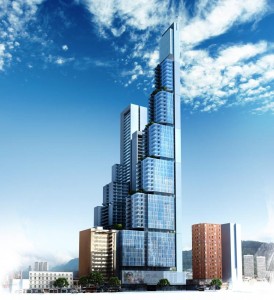
BD Bacata will be the first skyscraper in Colombia in 35 years, and the largest in the country, at 66 stories. Even more remarkable, it has become the largest crowdfunded real estate project in the world. Prodigy Network, the Bogota- and New York City-based real estate company developing the project, sought to provide “small investors the opportunity to buy participations in large-scale real estate.”
The project is located in the el Centro district of Colombia’s capitol city, Bogota. El Centro was once the city’s thriving downtown area, but over the past several decades, the area saw increased levels of crime and poverty, and development shifted to the Financial District, which is located several miles north of el Centro (think: Wilshire Boulevard compared to Downtown LA) Despite cheaper land prices, and a city “Regeneration Plan” for downtown, many standard, institutional-scale investors are still leery of investing in el Centro . Conversely, Prodigy Network saw an opportunity to use crowdfunding as a tool for securing capital in a location that locals believe to be a needed investment in their community.
When complete, BD Bacata will be a truly mixed-use building, combining retail, office, hotel and for-sale residential. Prodigy Network felt it was especially important to have diversified uses (and exits) in a project with this level of complexity. The 1.2 million square foot project is being built in phases by use type. Phase one includes nearly 50,000 square feet of retail, anticipated to attract 12,000 visitors per day. Phase two will be the construction of the shorter tower with 396 for sale apartments. The final phase is the construction of the tallest tower, which includes 117 offices and a 364-room hotel. Despite initial construction issues, Prodigy Network expects a 2015 delivery.
The residential portion is the only aspect of the project that is not being crowdfunded and is expected to cover 45% of the project costs.
Even with such a unique product, neighborhood and financing strategy, Prodigy Network was able to meet their fundraising goals, securing the first $80 million dollars within six months of entitlements. To date, over 3,800 Colombians have bought ownership shares, bringing the total crowdfunded investment to over $200 million dollars.
FINANCIALS
In order to fund the approximately $240 million dollar project, Prodigy Network targeted the “informal market” in Colombia. This market segment consists of individuals, as opposed to institutions or even high net worth family offices, who do not typically have access to institutional grade investment, but who understand the local conditions and want an opportunity to impact growth in their city. To manage such a large number of investors, Prodigy is harnessing CRM technology and a legal system in Colombia that has been used to the concept of crowdsourcing for some time. Without getting into the nuanced comparison of securities laws between the two countries, the U.S. is effectively beginning to allow the type of investments that have been legal in Colombia for some time. In addition, Prodigy honed its marketing platform while doing business selling condominiums in places like Miami and New York, and is now applying lessons learned to creating a massive marketing effort to source investors in BD Bacata.
In the Fall, The Runstad Fellows will be hosting an facilitated discussion about the BD Bacata project, and the implications for real estate in Seattle and the US, more generally. Some of the interesting topics that may be explored include:
- How will changes in regulations in the US affect crowd-sourcing?
- Would use of a Columbia-style “fiduciary model” better support crowd-sourcing in the US?
- To what extent can socially-valuable investments be competitively sourced via crown funding?
- How much less are investors willing to receive for the “right” projects and can that resulting cost of capital be appealing for a developer?
- How do you put in the place an effective marketing program for a crowd-sourced project?
Special thanks to Rodrigo Nino and Magdalena Sartori for their insight on this project.
Louisa Galassini, 2014 Runstad Fellow
Why Medellín matters
“It’s not about infrastructure, architecture or engineering, it’s about a political project inclusive of citizens”. Jorge Perez, current Director of Planning, Medellín

Photo by UW’s Runstad Fellows
Inspiring images of libraries, escalators and metro-cables in Medellín have populated the pages of worldwide media in recent years. But the real story of triumph does not come from any of these photogenic projects, but rather from the construction of invisible yet intentional ties and bridges: communities that care, support and ultimately, love and protect those investments.
In areas with a delicate social fabric, standard police is not successful. Similar to Sao Paulo’s favelas that have their own structures of control, Medellin’s gangs used to patrol territories where the state had little or no presence. So investing in mobility infrastructure alone only evidenced and exacerbated these traits. Soon after the escalators were built for example, gang members would charge a fee in order to leave users alone. By finding, training, connecting and supporting community leaders -and ultimately branding them as a state presence- Medellín has succeeded in leveraging its investments to provide full value to its people, while lowering maintenance costs and creating opportunities in the center and the periphery, as well as a sense of pride and inclusiveness that seemed impossible some years ago.
Another example comes from the metro system. In the very first days of operation, many of the cars were vandalized. The city quickly moved to repair them, fully aware that nothing invites more chaos than chaos. But the long term solution came through their youth. Free education and basic nutrition (0-5 included) is the city’s strategy for equity in the long term, so they made the most out of their investment. Similar to how Malmo, Sweden taught “Separation at Source” to new communities, Medellin designed communication campaigns aimed at kids to educate their parents. Medellin succeeded to create pride and belonging to all “paisas” in every sector: Medellín is the only city with a Metro system in Colombia.
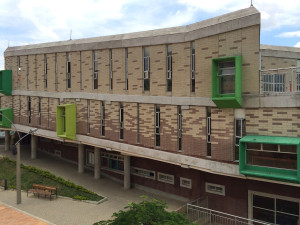
Photo by UW’s Runstad Fellows
In a similar way than Bogota’s trinity of aligned Mayors Castro, Mockus and Peñalosa invested in social inclusion and mobility projects to bring “dignity” and “decency” to the less favored (and majority) of inhabitants, Medellin’s Mayors Perez, Fajardo, Salazar and Gaviria also committed heavily and continuously in those communities under a common vision that prevailed across political administrations. And not only in mobility, but in utilities and services, formalizing extralegal settlements along the way to most of the “developed” world’s dismay.
Undocumented settlements are the defining factor of developing nations. Because land titles are absent, cities cannot invest in infrastructure and plan to recover it through taxes, becoming unable to leverage the borrowing power of the crowd as collateral for loans from standard multilateral organizations. Because of this, each territory must deal with their problems in unique ways, but rarely succeed in creating capital for their new citizens along the effort.
Curitiba for example, implemented inspiring programs like “Garbage that is not garbage” to deal with waste collection in extralegal areas that would otherwise create a health problem to the city at large. But Medellin used the muscle of its Public Utilities (the second largest enterprise in the country) to solve this problem in a more permanent way. New settlers were served with electricity, clean water and waste collection –and now mobility- on the general public’s tab. They were served with a utility bill of “Estrato Uno”, the lowest possible price bracket in the city -out of six – and almost fully subsidized, even before they procured a land title. Areas of this kind generally end up stealing light and water and create a public health concern, so it’s better for everyone to serve them formally anyways. And those are now tax-paying citizens with default rates that any public entity would envy, enabled through pre-paid cards and other creative strategies.
But this didn’t happen overnight. Property rights were not clear in about 60% of the city in the 80’s, so the city started an effort to legalize and serve them, and steadily succeeded thirty years later. But undocumented settlements continued to grow fast, especially in a country hit hard by displacement due to rural violence (read guerrillas, paramilitaries and land pressures derived from unlimited drug demand from developed nations), among other factors. So about 20% of the land area today is still considered outside the legal framework and the effort continues. The biggest challenge is where to draw the line.
Public Private Partnerships made possible through a strong Academia, today studies how to create that invisible limit working closely with the communities that live in the border to self-patrol. An Urban Growth boundary that adapts to the realities of these settlers that often prefer landslide risks that seem minimal by comparison to the threats they are accustomed to. Medellin prides itself as an urban laboratory and a city that prefers the “do” strategy than the “talk”, and that adapts quickly to the challenges that arise. Resiliency is only an afterthought, but it is tangible there.
Moravia, for example, an open air dump turned laboratory of bioengineering, lies in the outskirts of the 1900s Medellin –today’s central area-. Moravia was home to communities in desperation whose sustenance came from the waste itself in the most Dantesque inferno scene imaginable. People built their homes atop a time bomb of gases and contamination. So with academic collaboration and public resources over several decades, property titles were issued only so that they could be applied as down payment for homes in other areas, first far away, then nearby in order to keep the community connected. Subsidies and donations then took care of the remainder, and social housing with no debt now exists where only garbage was, surrounded by public amenities and community centers where kids learn to play instruments under the slogan “a kid with an instrument is a kid without a gun”
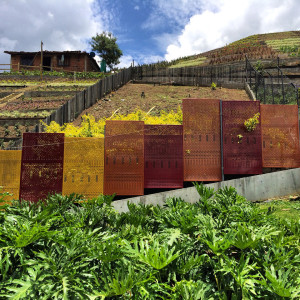
Photo by UW’s Runstad Fellows
Throughout the whole city, architecture plays a fundamental role in dignifying and beautifying the areas, undoubtedly increasing value to the surroundings while transforming the neighborhoods. And to many’s dismay, property taxes are not increased in order to deter gentrification. Only Havana comes to mind with such clear conscience to maintain social capital; except in Medellín citizens can sell their homes whenever they want.
Medellin’s success story lies in the bond and sense of pride of an already tight community that morphed from being a shame for the country’s tourism organizations to its biggest pride in less than two decades. The biggest lesson seems to be about working united as an organism to adapt while protecting the weak, in order to secure the opportunities for the private sector to develop and the quality of life for all. Even the most pro-capitalist people in Colombia agree that this is the right step ahead: a redistribution of the wealth that lies not in the pastoral rural lands, but in cities that will increasingly house the great majority of the population. (over 75% already in Colombia’s case).
The World Urban Forum recognized Medellin’s success stories selecting it as a worthy host for the 2014 event; ULI recognized its capacity as the most innovative city in the world in 2013; but perhaps the most revealing world title is the one obtained last week: the WWF recognized Medellin as the most socially connected city in support of their sustainable strategies. Their hashtag was the most voted in the planet: #welovemedellin. Yes we do.
Luis F Borrero, 2014 Affiliate Fellow
